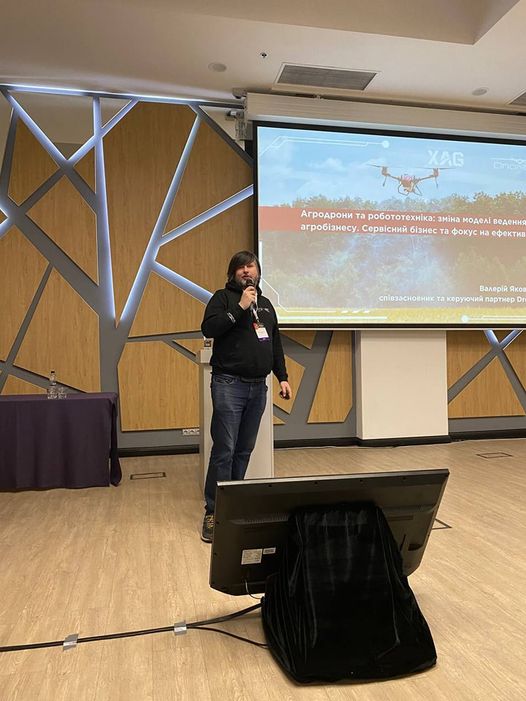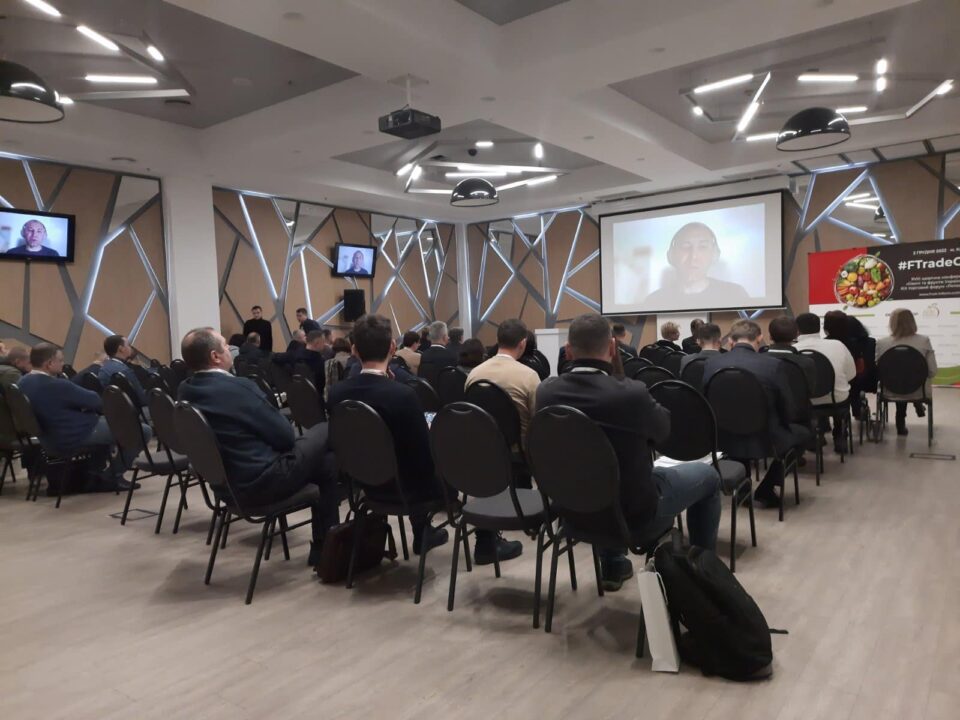Since the start of Russian aggression in February 2022, Ukraine has switched to a wartime footing. The country’s agro-industrial complex enterprises that continued their work and provide food for the army and the entire country were no exception. Farmers have been growing and harvesting fruits and vegetables in the face of constant air raids, shelling, and power outages for ten months. In addition, a sharp increase in all costs, labor shortage, and disruption in all supply chains forced farmers to change their approaches to production and adjust. As shown by the recent offline (!!!) annual conference “Vegetables and Fruits of Ukraine – 2022“ within the framework of #FTradeClub-2022, the Ukrainian fruit and vegetable sector is actively developing and introducing state-of-the-art technologies. The event was organized by the APK Inform: Vegetables and Fruits with the support of the FAO/EBRD project in Eastern Europe and Central Asia. EastFruit and Sapienza.media were information partners of the event.
Olexandr Khorev, head of the APK-Inform: Vegetables and Fruits project, traditionally summed up the results of the year, and analyzed the key factors and their impact on the sector. The expert shared forecasts for the production and prices of potatoes, borsch vegetables, and apples in Ukraine in the 2022/23 season.
 The government grant program for the development of orchards and greenhouses was presented by Serhiy Ostapets, an expert on the implementation of support programs in agriculture, USAID AGRO project. The speaker explained in detail the granting procedure and new conditions for participation in the program. The audience asked questions and made their suggestions, advising to modernize the requirements for farms and consider new production technologies, rather than focus on outdated standards.
The government grant program for the development of orchards and greenhouses was presented by Serhiy Ostapets, an expert on the implementation of support programs in agriculture, USAID AGRO project. The speaker explained in detail the granting procedure and new conditions for participation in the program. The audience asked questions and made their suggestions, advising to modernize the requirements for farms and consider new production technologies, rather than focus on outdated standards.
Hi-tech opportunities for agribusiness in Ukraine and the use of international experience in the country were summarized by Andriy Yarmak, the economist at the FAO Investment Centre. Among many areas, the analyst singled out the robotization of production, and the widespread use of agricultural drones, which can significantly increase the efficiency of horticulture and reduce the cost of labor, plant protection products, and fuel. Valeriy Yakovenko, the founder of Drone.UA, spoke more on drones in Ukraine. According to Valeriy, Ukraine is one of the leading countries in Europe to use drones in the agricultural sector. In addition, it is allowed to use drones to cultivate farmland in Ukraine, even in military conditions. Valeriy Yakovenko showed calculations proving that the use of drones is beneficial for farmers. And one must not buy his own drone – a comprehensive drone rental service operates in Ukraine.

Another high-tech innovation that Andriy Yarmak talked about is vertical farming. A successful case of creating and operating a whole cluster of vertical farms is the Green Wave Organic project, presented by its leader Volodymyr Novy. 750 000 plants grow at 1 500 m2 of the complex created by Green Wave Organic. 1 500 kg of vegetables and herbs are produced there every day.
How to keep so many plants healthy? Tetyana Ivchenko, Head of Laboratory of Genetics, Genetic Resources, and Biotechnology, Institute of Vegetable and Melon Growing of the National Academy of Agrarian Sciences of Ukraine, Dr.sc.agr, having analyzed the risks of growing fruit and vegetable crops in vertical greenhouses gave practical advice on preventing the spread of diseases and pests. It is not surprising that in the context of a sharp rise in the cost of PPPs and a deliberate reduction in the use of chemical PPPs in organic cultivation, Tetyana’s speech attracted the attention of producers who turned to the scientist for recommendations.

Another challenge for the Ukrainian agro-industrial complex was emergency power outages, disrupting many production processes. According to Andriy Marushchak, commercial director of Van Dyke Technics LLC, storage facilities for fruits and vegetables consume a lot of electricity. In this case, everything depends on the storage – its purpose, type, and availability of the necessary equipment. The company had previously had solutions for possible interruptions in energy supplies, but no one was ready for such a long outage. But there is a way out – the main thing is the effective management of high-tech storage equipment.

The presentations in the second part of the conference dealt with the state and prospects of the berry sector, processing, freezing, as well as trade issues – the features of the functioning of large markets. In addition, the results of the November audit of the fruit and vegetable departments of Ukrainian retail chains in Dnipro and Kyiv were summed up.
The use of the site materials is free if there is a direct and open for search engines hyperlink to a specific publication of the East-Fruit.com website.




